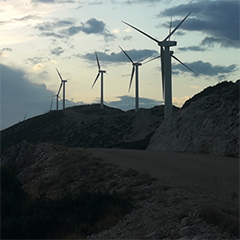Wirescan has offered the innovative and non-destructive LIRA cable testing technology to the market for some years now. We have been watching the industry and looking at innovation, new technologies and how the cable testing industry can make the transition to the digital age. We came up with Wirescan Digital, a cloud-based cable test database where you can upload and store all your cable test data. This solves many issues related to access and utilization of the data.
In this article we will present some thoughts on the industry, and how our new product, the cable tester Wirescan GO!, together with our cloud service, Wirescan Digital, can improve cable operations and maintenance by digitalizing the condition assessment services. The article presents a timeline of cable testing where we will look at common practices and how digitalization is the future for cable condition assessment and monitoring.
The Past
Cable manufacturers, handlers, owners and operators have been collecting cable condition data from various sources in almost every cable installation project.
Cable manufacturers perform regular quality assurance tests throughout the whole production process, and they ensure the quality of the final product with the Factory Acceptance Test (FAT).
Cable handlers and installers now take over the responsibility to bring the cable safely to the site and then install the cable without any quality deterioration. Several test methods are applied during production, before, during and after spooling and installation. After installation and termination, the commissioning tests are performed to ensure cable quality and system integrity before energizing the system. The test methods applied during these different stages are often determined by the customer guided by the IEEE 400 bundle for quality assurance.
Looking at the large number of offshore wind cables already installed and all the cable installation that lies ahead of us, a significant amount of important cable condition data has been and will be generated. According to operators we have been talking to we can derive three main challenges with this data; the data is difficult to access, the data is in a format which makes it difficult to utilize, or the worst case, the data is not available at all.
As an example; you’re running an offshore wind park development project with 100 inter array cables. LIRA, TDR and OTDR are chosen as test and fingerprinting methods, and these technologies alone will generate more than 400 pdf reports if the testing is performed at FAT, spooling and commissioning. These reports are often communicated by email or temporary data rooms and you usually end up printing them on paper and the leaving them in a folder, in a storage room. Not a very efficient and viable solution if you want to extract maximum value from these test reports as they are a part of your total CAPEX of the project and you wonder how can this be taken care of in a simpler and more effective manner?






























